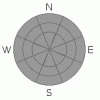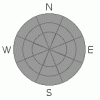We have ended our avalanche advisories for the season.
This does not mean the end of avalanches, nor the possibility of more avalanche incidents. But all our forecasters are off duty for the season.
But you can continue to share your own avalanche observations with others in the community through our website as usual. Just click on the Submit Observation link on our home page and you can read the observations from others in the Current Conditions off the main menu.
Also, remember that the closed ski areas are not doing any avalanche control so those slopes that usually have moguls are now potentially dangerous avalanche terrain and you have to do your stability evaluation and safe travel practices just like any other backcountry avalanche terrain.
In the sections below, I have outlined some general strategies for avoiding spring avalanches. But first....
We would like to say thank you, thank you, thank you to everyone who contributed to your community avalanche center, especially all of you who sent in observations of avalanches and general conditions. The more we share our information, the safer we are.
Last, but not least, we would like to especially thank everyone who contributed to the funding of our community avalanche center. We are a Forest Service program but over 3/4 of the funding comes from other partners. This includes: all of your donations through Friends of the Utah Avalanche Center, Utah Division of State Parks and Recreation, Utah Public Safety, Salt Lake County, Black Diamond, Backcountry.com, all the ski areas that donated lift tickets, Ski Utah, Unified Fire Authority and the various shops that donate snowmobiles and other equipment such as Polaris/Tri-City Performance, Weller's Recreation/Ski Doo and Arctic Cat/Big Pine Sports, Recco, Wasatch Backcountry Rescue, Back Country Access and ABS. Whew! Forgive me for anyone I have forgotten. As you can see, we have lots of support and we are the epitome of a successful partnership organization--thanks to you.
We should have our annual report done soon, which you can find in the Archives section. |


